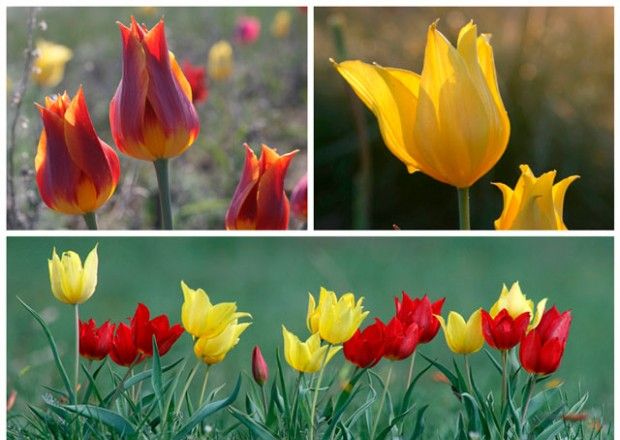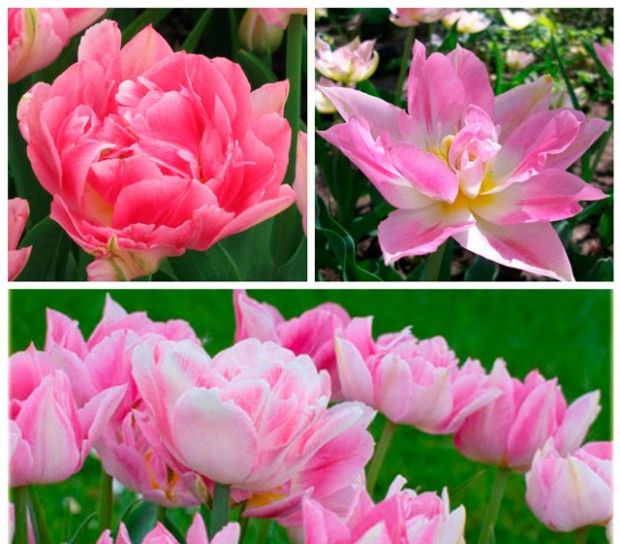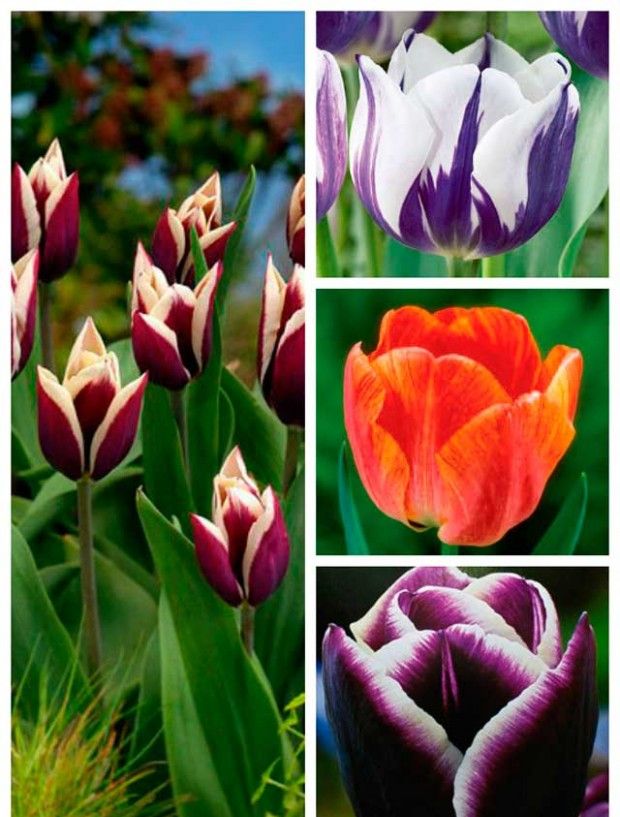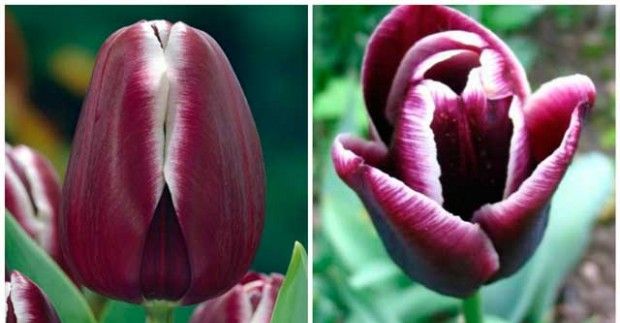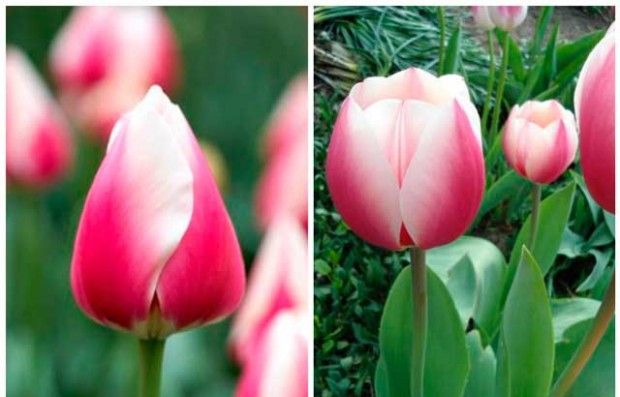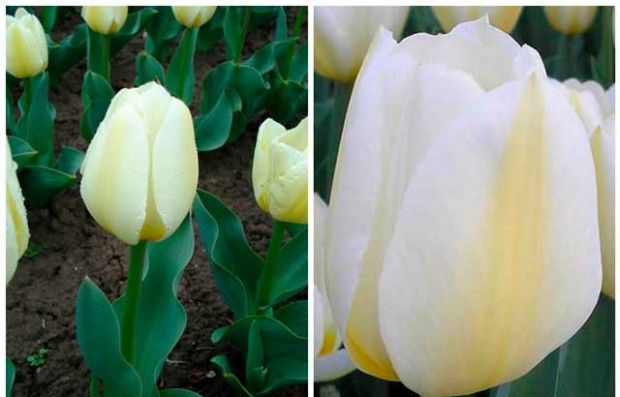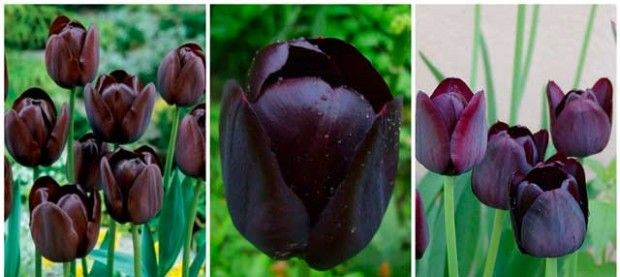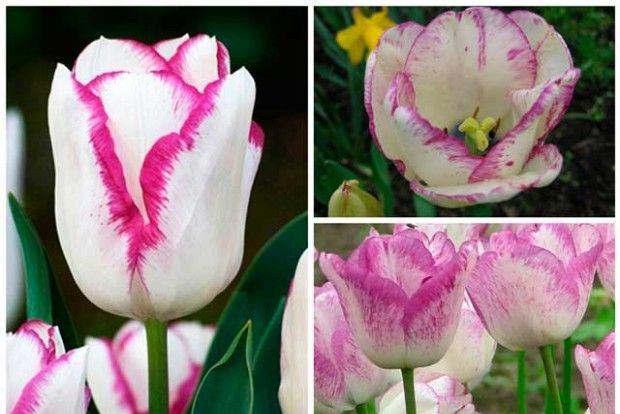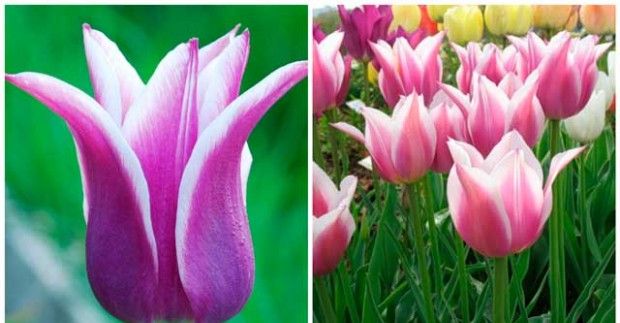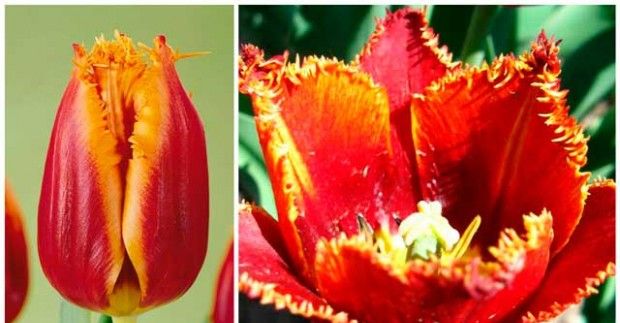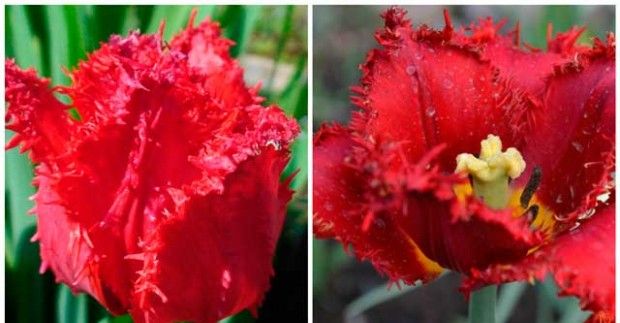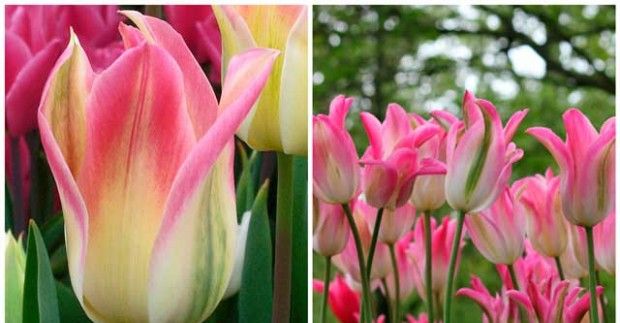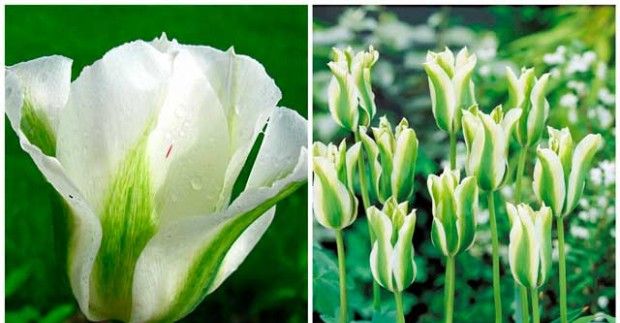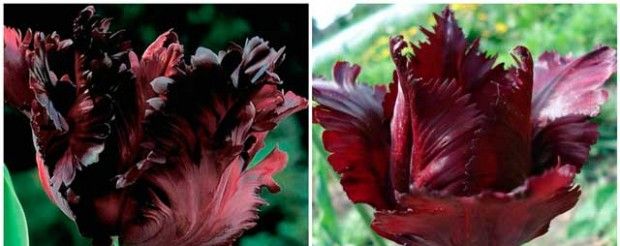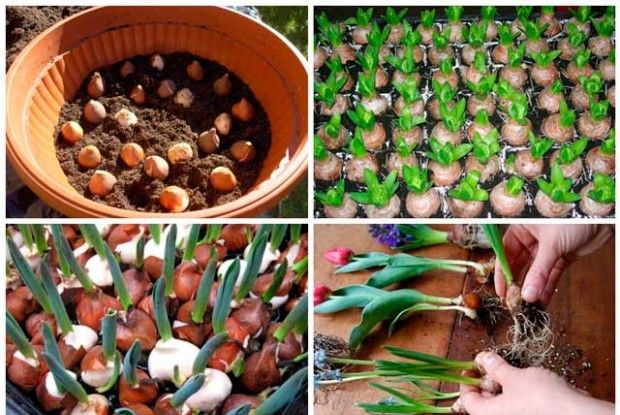Legends were formed about these bright and beautiful colors, they gradually enchanted the East and «got over» to the West, where they have been grown for hundreds of years. What is the special charm of tulips? Why did they become permanent residents of gardens and flower beds, park areas and summer cottages? First of all, these flowers captivate with their variety. Various colors and shapes of petals give even an inexperienced florist the opportunity to realize their idea and create an effective composition..
Another advantage of tulips is that they bloom earlier than other flowers and trees in early April. But the flowering time depends on the variety. In order not to be mistaken with the choice, read the description of the most famous and popular varieties..
At the moment, all known varieties of tulips divided into 15 classes. And they enter 4 different groups: early flowering, medium flowering, late flowering. The last group classifies plants not by the flowering period, but by the wild-growing variety and its hybrids..

Early flowering tulips
This group of varieties early flowering: usually the buds bloom in early April (exact time depends on the weather). It includes two classes: simple early and double early tulips..
Simple early
Most of the varieties belong to the 17-18 century. All of them are distinguished by a strong stem and resistance to bad weather. The buds are shaped like a cup, but bloom very quickly in direct sunlight.
Tulip Gesner
Tulips Cooler Cardinal
Terry early
The unusual shape allowed these varieties to pass through the centuries and find themselves in the flower beds of summer residents. Plant buds usually persist for a long time, but if they open completely, then can reach 8 centimeters in diameter.
Ice Cream
Monte Carlo
Peach Blossom
Mid-blooming tulips
This group has a traditional flowering time – May. There are individual specimens that can bloom at the end of April, but this does not depend on a specific variety, but on weather conditions and plant care..
Triumph
One of the most famous classes, resulting from the crossing of two others: Darwin and Simple. These flowers are often found not only in flower beds and gardens, but also in luxurious bouquets, since great for cutting.
Tall stem, large bud, wide range of colors and ability to keep fresh appearance for a long time make tulips categories «Triumph» some of the most popular among flower lovers.
Alexander Pushkin
Havran
Darwin hybrids
Tulips of this class were bred in the sixties of the last century. Flowers are large in size and tall, thick stems. The stem can be up to 80 centimeters, and the bud itself, when fully expanded, is 10 centimeters. Very often, representatives of this class are found in decorative plantings of various types. Resistance to the variegated virus made them ideal candidates for mass landscaping. However, they look great in bouquets., keeping the shape of the bud for a long time.
Eric Hofsue
Russian Princess
Marias Dream
Late blooming tulips
The end of May is the month when medium-flowering tulips «depart», they have a short lifespan. But you can decorate a summer cottage or a small flower bed with these bright flowers even at the end of May. Late-blooming tulips have a special resistant to sunlight and the approaching heat. They bloom at the end of May and will delight the eye until mid-June.
But be careful, plants in this group are least adapted to harsh weather conditions. If the cold weather suddenly returns, the tulips will die. Experienced gardeners and summer residents recommend preparing in advance the material that allows you to cover delicate flowers in case of a sudden change in temperature.
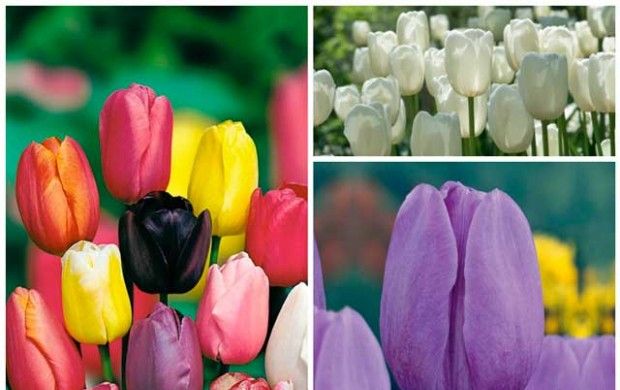
Late simple
These flowers can be distinguished by the thick base and slightly square shape of the lower part of the flower. In general the buds resemble a glass. A wide range of colors and shades, as well as the ability to maintain a fresh look for a long time make them ideal candidates for a place in a beautiful bouquet..
Queen of night
Shirley
Prince Vladimir
Lily-colored
These tulips can be distinguished even by a person who is not fond of planting flowers.. The specific shape of the petals really reminds of lilies, but still here are tulips, which were bred back in the 16th century. And although they look fragile and delicate, they keep their shape perfectly. Easy to care for.
Considered to be quite rare, great for both cutting and planting.
Pretty woman
Ballad
Fringed
This relatively young class was celebrated in 1930. All flowers have slight fringe around the edge of the petal, vaguely reminiscent of frost. The size of the flower can vary, so can the properties. It all depends on the specific variety.
Thick
Mustang
Cambridge
Greens
This class is now at its peak of popularity. Amazing a combination of delicate thin leaves with a green stripe, which runs along each of them in the center from the base, is mesmerizing. This unexpected combination allows tulips to stand out from the crowd of other flowers in bouquets and flower beds..
Florosa
Spring green
Rembrandt
Bright and colorful tulips of this class attract a lot of attention. And though most of the flowers are affected by the variegation virus, against the background of the traditional color, it is almost invisible. Spots and strokes give the petals an amazing pattern that cannot be repeated.
Princess Irene
Sorbet
Parrots
These stylish and unusual flowers were named after their clear resemblance to the wings of birds. The edging of the petals surprises with its torn and tousled shape. Unfortunately, most of the varieties are not intended for cutting. Large flowers are kept on thin stems, so they often break. Look great in groups.
Black Parrott
Late terry
Many breeders call this class «peony» for a clear resemblance to peony flowers. And yet tulips of these varieties have their own characteristics: a large bud opens quickly and can break off. That’s why flowers are not suitable for cutting. But tied up in time, they create a wonderful composition.
Miranda
Nice
Growing conditions and care for tulips
It is worth remembering that tulips need to be dug up and replanted every year. Moreover, the place must be selected so that tulips do not grow on it for three years before planting. But the neighborhood with trees and other large plants will not harm the flowers, they still open earlier.
Given the fragile structure of tulips, it is recommended to plant plants in places protected from wind and direct sunlight..
To these flowers moisture needed. In dry spring they need additional watering. At the same time, monitor the condition of the buds and leaves. If water gets into «head», then a tulip with a thin stem may break.
Required fertilize flowers three times a season: as soon as you notice the first shoots, before and after flowering.
Carefully monitor the condition of all flowers on the site. Tulips are susceptible to various viruses, they are difficult to tolerate and quickly become infected. If you find a diseased plant, then it is better to destroy it or dig it up along with the surrounding land in order to protect all tulips nearby from death..



